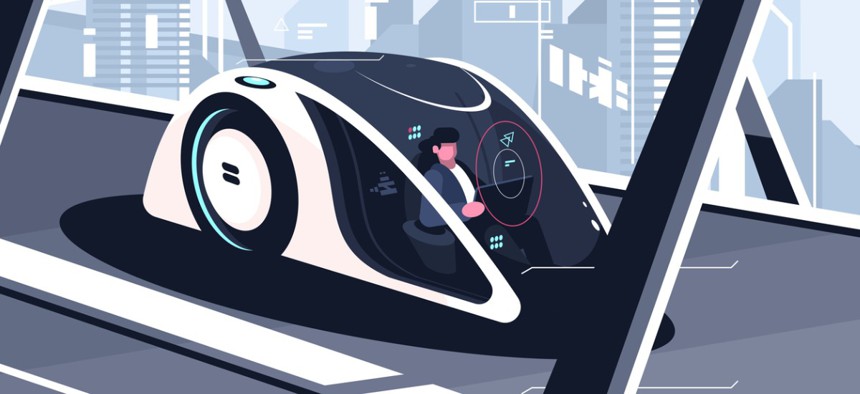General Motors Licenses Neural Network Tech from National Lab

KIT8/iStock.com
The artificial intelligence-driven system can design thousands of networks in hours instead of years.
General Motors is set to tap an artificial intelligence software system from Oak Ridge National Laboratory for its driver assistance systems technology and future-facing automotive designs.
The automaker is the first entity to commercially license the Multinode Evolutionary Neural Networks for Deep Learning, or MENNDL, the Energy Department’s ORNL announced Tuesday. The system is also the first AI technology to be commercially licensed from the Tennessee-based lab.
“ORNL has ongoing research collaboration with General Motors, as well as with other automakers, to develop advanced technologies for vehicles,” Robert Patton, head of the lab’s Learning Systems Group and leader of the MENNDL development team told Nextgov in an email. “As part of this collaboration with GM, the need for more advanced AI within vehicles emerged.”
Artificial neural networks are essentially computational systems built to mimic the human brain. Such algorithms are used by computers to recognize patterns across datasets of text, images or audio—and once trained can do so quicker and at a much broader scale than humans. These brain-inspired networks, though, are challenging for even the best coders to design effectively.
That’s where MENNDL comes in.
The system can generate “thousands of optimized neural networks in a matter of hours,” ORNL’s release notes, “depending on the power of the computer used.” The tool was built to automatically combine and test millions of parent networks, and in turn, produce high-performing optimized neural networks for specific applications.
“It is worth noting that MENNDL is capable of leveraging the power of ORNL’s Summit supercomputer for the design of AI algorithms; however, the end result of MENNDL, a highly tuned and refined neural network, can be deployed to almost any computing device,” Patton further explained. “MENNDL is capable of running on computing platforms that range from a small desktop computer to cloud computing to high-performance computing systems such as ORNL’s Summit.”
Last year, through a collaboration with Stony Brook Cancer Center, MENNDL and Summit were used collectively to produce neural networks that can pinpoint cancer markers in biopsy images. The system has also supported efforts involving medical research, satellite images, high-energy physics data and neutrino research since it came to be in 2014.
General Motors researchers could use MENNDL to gain a better grasp of how cars can speedily and correctly perceive environments—and to navigate safely through them. Tapping advanced neural networks that can instantly analyze onboard camera feeds and accurately label objects in the car’s field of view, the system could help accelerate the making of technologies to underpin driver assistance systems.
“With the need for safety and autonomy continuing to grow in the vehicle space, it becomes essential that the vehicles begin to more intelligently process their sensor data immediately as it becomes available using edge computing devices,” Patton said. “Achieving this need requires advanced AI algorithms that can not only process the sensor information very accurately but do so quickly, energy efficiently and with robustness.”
Even for experts, he added, developing such algorithms that meet those complex performance needs is exceptionally tough.
“MENNDL provides an automated approach to developing these advanced AI algorithms in a reduced amount of time,” he noted.
NEXT STORY: A Better Way to Spot Deep-Faked Satellite Images



